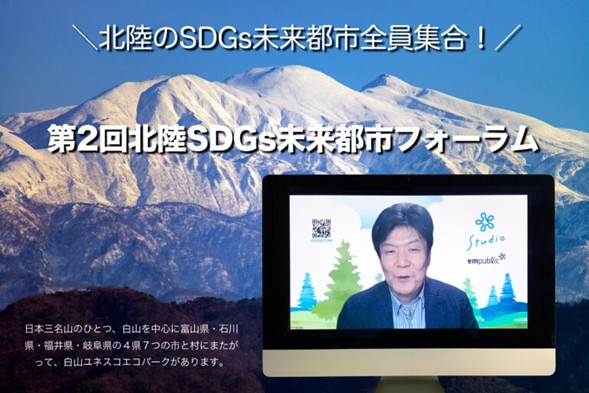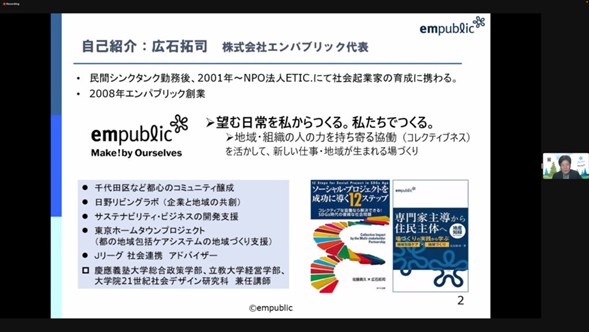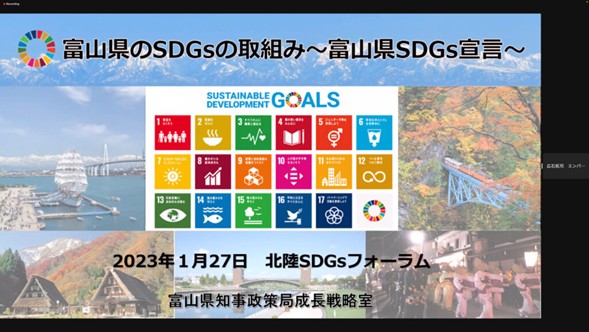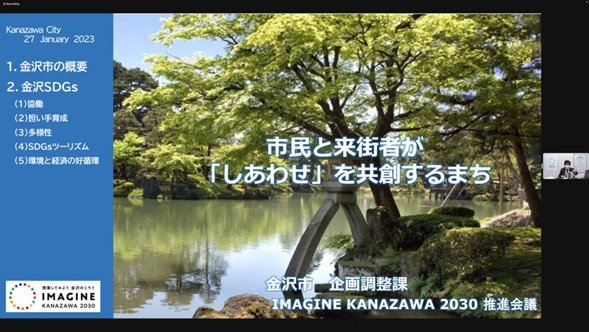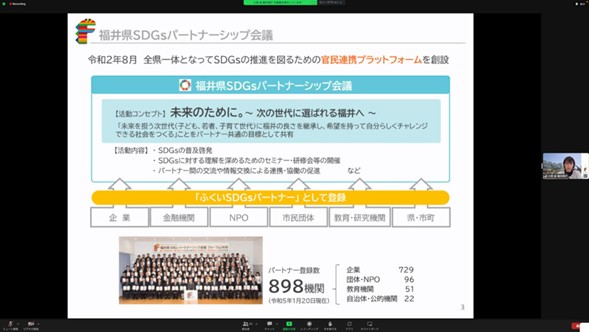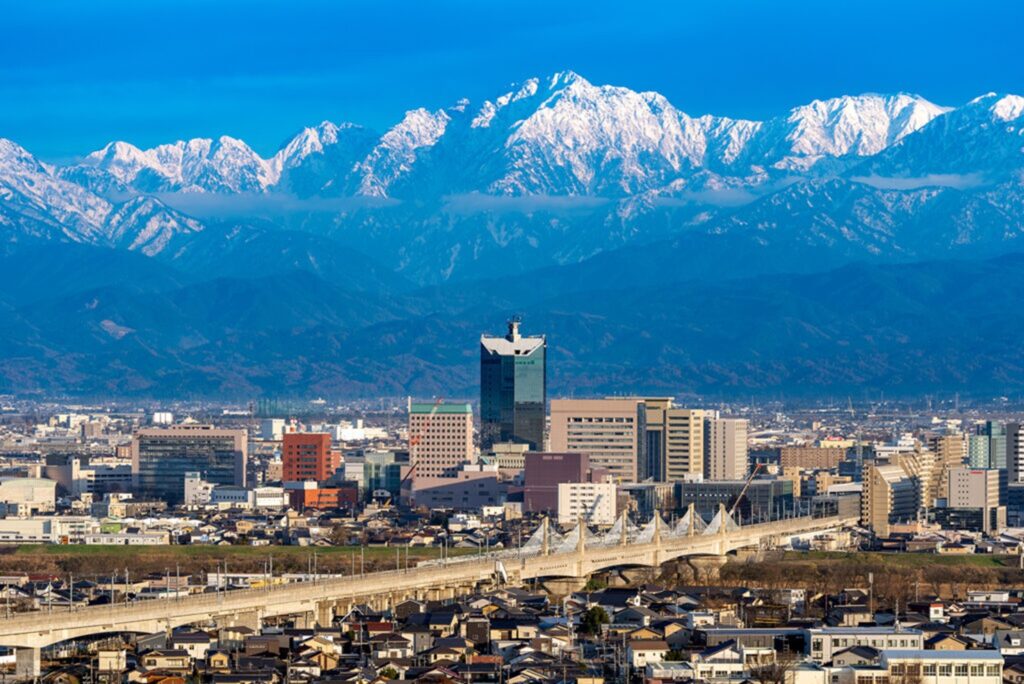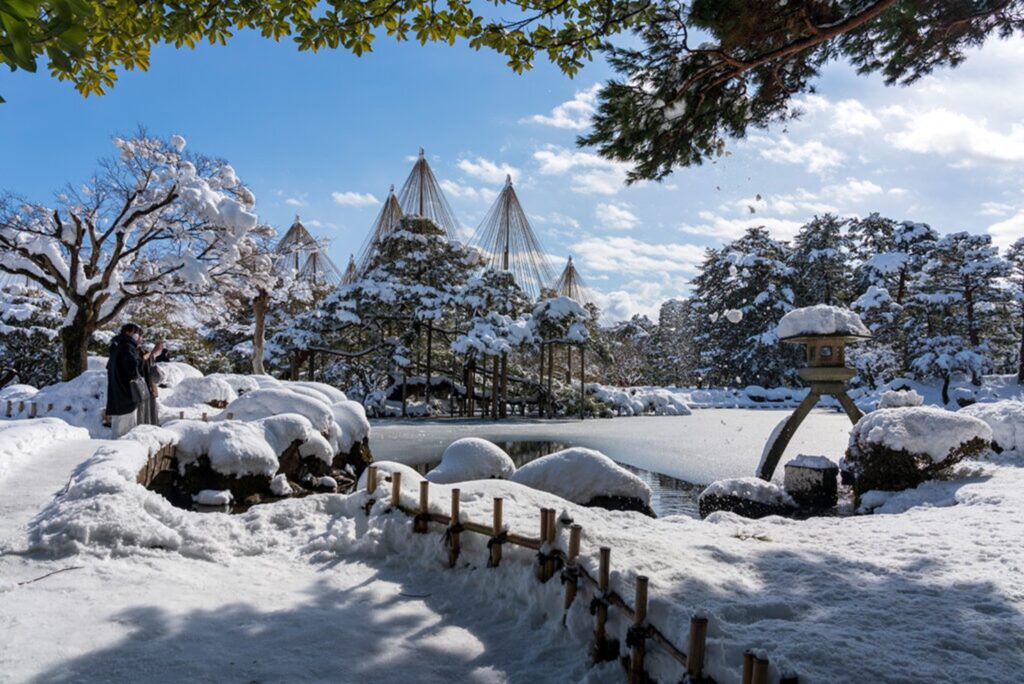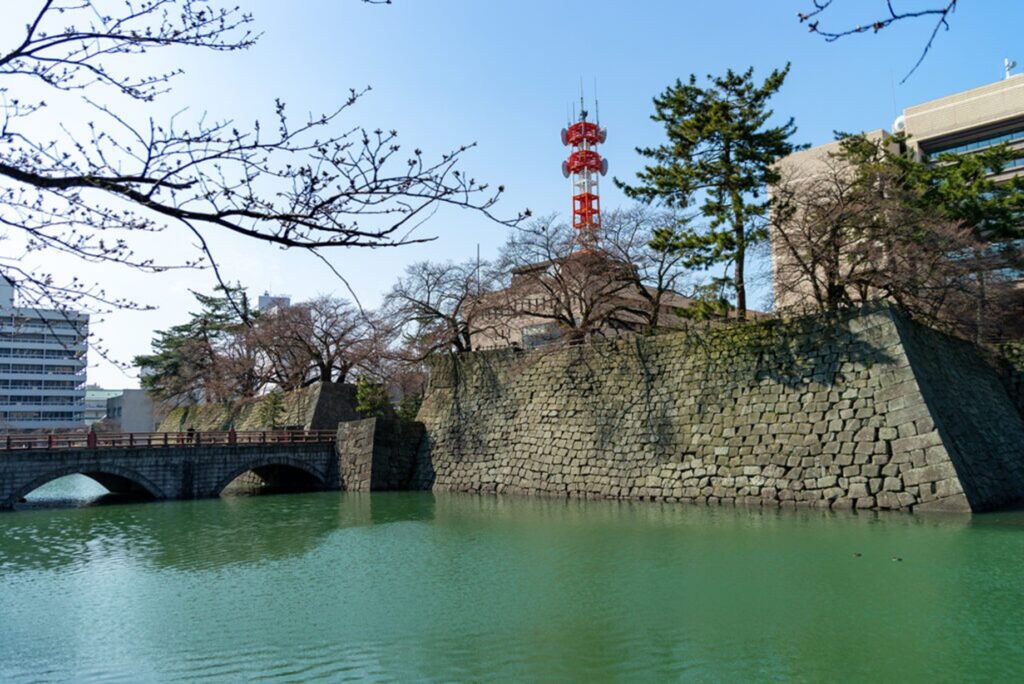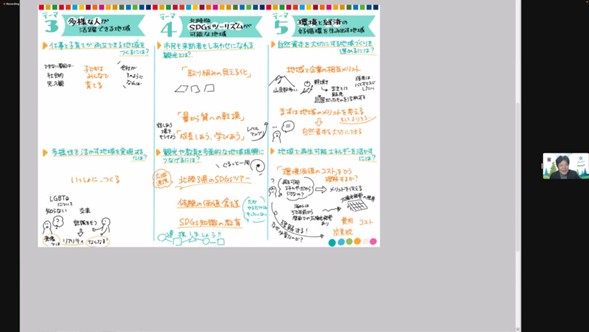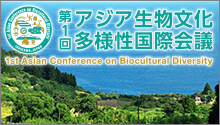This forum brought together individuals, businesses, organizations, and citizens from municipalities in the Hokuriku region who are engaged with the Sustainable Development Goals (SDGs). The event aimed to share insights about the current state of Hokuriku and envision the region’s future. The first session featured presentations on SDG initiatives from the 12 designated SDG future cities across three Hokuriku prefectures (comprising 10 cities from two prefectures). In the second session, participants engaged in themed group discussions and shared their commitments to achieving SDG targets through plenary presentations.
Keynote Speech: “Current Status of Local SDGs”
Mr. Takuji Hiroishi, Representative Director of Empublic Corporation, shared insights on significant recent developments regarding the SDGs and highlighted key initiatives from SDG future cities across various regions.
He pointed out that the SDGs help us understand that changes in nature also affect our society and economy. Mr. Hiroishi discussed several key topics related to the SDGs, such as finding “integrated solutions for environmental, social, and economic challenges.” This approach encourages us to tackle local problems in a more connected way rather than treating them separately. He also highlighted critical areas of focus, including “decarbonization,” “circular economy,” “diversity and inclusion,” “partnerships between local governments and businesses,” and “human capital management strategies.”
Additionally, he introduced specific advanced examples such as Konan City in Shiga Prefecture, which aims to simultaneously address economic, social, and environmental challenges through an integrated approach, and Yokohama City’s “Yokohama Circular Economy,” which focuses on designing a society and region that minimizes resource use within the entire social system.
Report on Initiatives of SDG Future Cities in Hokuriku
In order for us in the Hokuriku region to leverage our strengths and create greater synergy, the first step is for each of us to understand the efforts of the others. We presented what we have been working on, the challenges we face, and our future goals.
From Toyama Prefecture, three municipalities participated: Toyama City, which is working towards the development of a sustainable city utilizing public transportation as the core of a compact city model while promoting smart city initiatives through digital technology and data; Nanto City, aiming to create a sustainable community that generates positive cycles based on local resources, striving to be a “top-tier rural area” where the richness of the community is palpable; and Toyama Prefecture itself, which advocates for “Toyama, the advanced prefecture for the environment and energy leading the Japan Sea region,” aiming for sustainable economic development while leveraging the blessings of beautiful mountains, the sea, and abundant water resources.
From Ishikawa Prefecture, five municipalities participated: Kanazawa City aims to create the “Kanazawa Future Scenario” in collaboration with its citizens, with the goal of becoming a city where “citizens and visitors co-create happiness.” Komatsu City focuses on “human development,” deeply engaging with and organically connecting the three aspects of economy, society, and environment. Kaga City is actively promoting the introduction of advanced technologies and talent development to address the significant challenges posed by population decline and a multi-polar urban structure. Hakusan City is working on initiatives that leverage the synergistic effects of its globally renowned assets, the “Hakusan Tedorigawa Geopark” and the “Hakusan UNESCO Eco-Park.” Finally, Nomi City has launched a special SDGs website aimed at creating opportunities for people to connect, while also considering its application in local hometown education.
Fukui Prefecture has begun taking action as a unified region, with the motto “Next Generation First,” to realize its long-term vision for 2040, focusing on harnessing human resources as a pillar of development. Additionally, Sakai City, which promotes the slogan “Empowering Women in the City of Glasses—Sabae, Where Women’s Empowerment Empowers the Community,” has also joined.
Mr. Hiroishi expressed his impressions, stating, “It’s inspiring to see various actions taking place in different regions and moving forward. I was particularly impressed by the collaboration with businesses that is developing in each area. I hope that by learning about initiatives in other regions, we can continue to invigorate our communities.”
Part 2: Group Discussion
Participants were divided into five groups, each focusing on themes they would like to develop in the Hokuriku region in the future. They engaged in discussions based on the prepared topics.
Theme 1: Building a Community That Fosters Collaboration Beyond Existing Frameworks
How can we facilitate exchanges of activities within similar fields and themes? → We propose inviting companies that have declared their commitment to the SDGs. One challenge is the limited number of venues for such exchanges.
What platforms can we establish, both intra-regionally and inter-regionally, to promote the SDGs? → It would be beneficial to utilize existing platforms, such as social media, to disseminate information effectively.
Theme 2: SDGs and the Next Generation: A Region Committed to Fostering Future Leaders
What does SDG education look like in practice? → Key terms that emerged included “diversity of stakeholders” and “collaboration among school boards.”
What type of learning will effectively expand and integrate the SDGs into the community? → Important concepts identified were “Acknowledging children’s efforts,” “Providing experiences,” and “Educating for the next generation.” It is crucial to create spaces where adults can recognize and appreciate the contributions made by children.
Theme 3: Communities Where Diverse Individuals Can Thrive
How can we create communities where people can balance work and childcare? → The challenges lie in existing social structures and preconceived notions. A key solution is the concept of “Raising children together.”
How can we foster a community where diversity can flourish? → A central idea is “Creating together” with respect to LGBTQ issues. Many people lack awareness about LGBTQ matters, so it is essential to engage in dialogue with LGBTQ individuals and work towards building an inclusive society.
Theme 4: Developing Hokuriku’s Unique Brand of SDGs Tourism
What type of tourism can bring joy to both residents and visitors? → Key concepts identified were “Visualization of efforts,” “Shifting from quantity to quality,” and “Growing and learning from one another.”
How can we connect tourism to education and promote multifaceted regional development? → We should establish an SDGs tour encompassing the three Hokuriku prefectures through regional collaboration. This initiative would highlight the unique experiences of the region and educate locals, enabling them to share information about the SDGs in the places they guide tours.
Theme 5: Creating a Virtuous Cycle Between the Environment and the Economy
How can we promote regional development that values natural capital? → We should leverage the region’s strengths and ensure that businesses can also benefit from them.
How can we maximize the use of renewable energy in the region? → It is important to help the public understand the environmental value associated with renewable energy costs. We anticipate that financial benefits will remain within the region and that the general public will gain awareness through initiatives like carbon pricing.
In his closing remarks, Mr. Yasuhiro Iida, the vice chairman of the Kanazawa Junior Chamber, said, “I hope to continue working together with all of you through these ongoing discussions to make the Hokuriku region a place full of smiles.”


